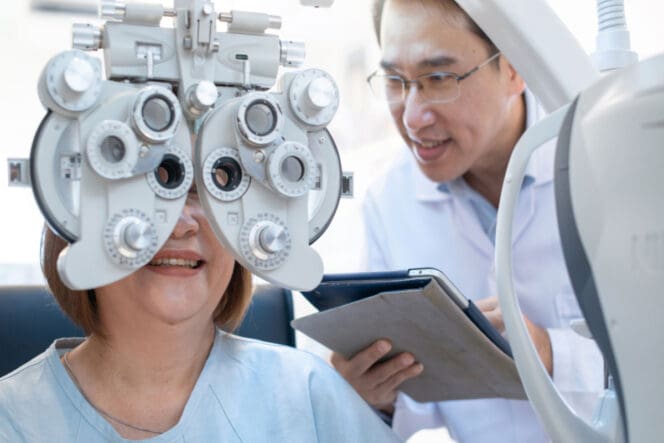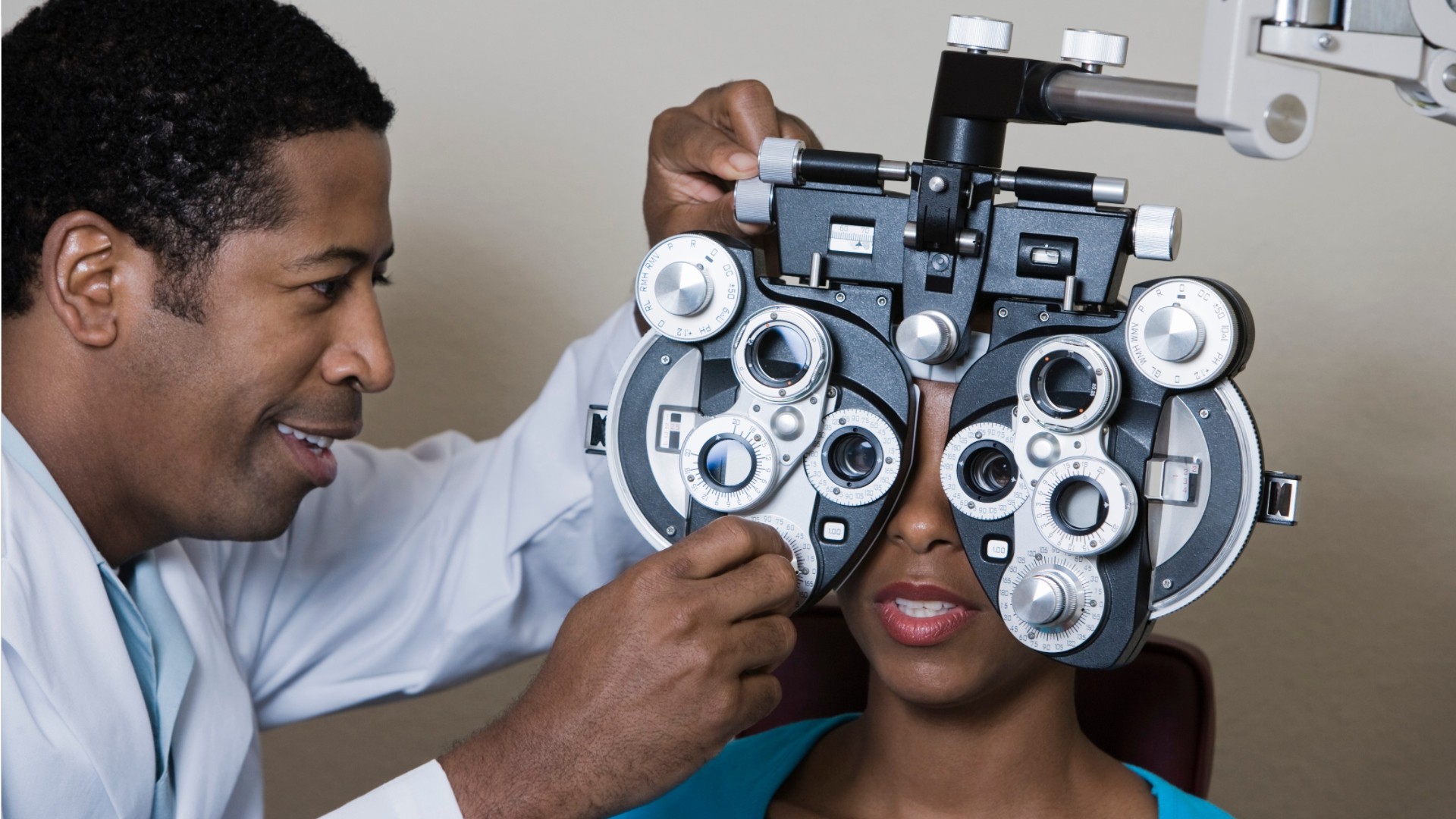Understanding the Function of Your Eye Doctor in Maintaining Vision
Understanding the Function of Your Eye Doctor in Maintaining Vision
Blog Article
Understanding the Comprehensive Role of an Optometrist in Modern Eye Care
In the progressing landscape of medical care, the scope of an eye doctor's function has actually significantly broadened, extending well beyond the confines of traditional vision adjustment. With improvements in innovation and a boosting focus on precautionary care, optometrists are important in detecting and taking care of chronic eye problems, while likewise taking part in very early disease detection. Their competence in innovative diagnostic methods such as optical coherence tomography is important. However how do these obligations intersect with their role in promoting overall eye health, and what does this mean for patient results in a collective health care atmosphere?
Expanded Scope of Practice
In the last few years, the role of optometrists has developed substantially, with numerous professionals now embracing an increased scope of technique that prolongs past conventional eye exams. This evolution shows the expanding acknowledgment of eye doctors as primary doctor in the field of eye care. Their obligations currently incorporate a vast range of services, including recommending medicines for eye problems, taking care of chronic eye illness, and executing minor surgeries. This change has actually been driven by developments in optometric education and learning, enhanced scientific training, and the raising demand for comprehensive eye treatment solutions, specifically in underserved locations.
Further, optometrists are currently a lot more entailed in joint treatment, functioning very closely with eye doctors, medical care doctors, and other healthcare professionals to make sure alternative individual treatment. This interprofessional partnership is critical in taking care of intricate instances that call for a multidisciplinary method. Furthermore, optometrists are playing a pivotal duty in public health and wellness campaigns, such as vision testings and eye health education and learning, focused on boosting community wellness outcomes.
The increased scope of technique for optometrists not just enhances their capability to provide thorough care yet also resolves the growing need for available and reliable eye care solutions, contributing to total healthcare enhancements.
Very Early Condition Detection
Very early discovery of eye diseases is progressively coming to be a centerpiece in the broadened duty of optometrists. As primary eye care suppliers, eye doctors are uniquely positioned to recognize very early signs of ocular problems such as glaucoma, macular deterioration, diabetic person retinopathy, and cataracts. This critical function is critical, as early diagnosis can substantially boost the management and prognosis of these conditions, possibly preventing vision loss and enhancing person results.
Eye doctors use comprehensive eye evaluations to find refined changes in vision and eye health. These assessments usually consist of analyses of visual acuity, intraocular pressure, and retinal health. The ability to acknowledge early signs of systemic health and wellness concerns, such as high blood pressure and diabetes mellitus, via eye indicators better emphasizes the significance of regular eye examinations. Early intervention is not only helpful in protecting vision yet additionally in lowering health care expenses associated with advanced condition therapies.
Moreover, eye doctors play a crucial role in patient education and learning, highlighting the significance of routine eye assessments as part of total health care. By cultivating a positive technique to eye care, eye doctors add substantially to public health and wellness, guaranteeing conditions are caught and handled efficiently prior to they can progress.
Advanced Diagnostic Methods
Advanced analysis strategies have actually reinvented the practice of optometry, allowing experts to discover and keep an eye on eye diseases with unmatched precision. Technologies such as optical coherence tomography (OCT) offer high-resolution, cross-sectional photos of the retina, assisting in very early discovery of conditions like glaucoma and macular degeneration.
Another vital innovation is electronic retinal imaging, which catches thorough sights of the retina utilizing high-def cams. This innovation is vital in recognizing modifications in retinal framework in time, thus aiding in the management of problems like diabetic person retinopathy. Aesthetic field testing, boosted by computer-aided systems, permits for exact mapping of an individual's field of vision, vital in tracking and diagnosing glaucoma development.
Corneal topography, an additional remarkable analysis tool, you can try these out generates thorough maps of the cornea's surface area. This is especially valuable in fitting call lenses and advice preparing refractive surgical treatment. These advanced analysis methods collectively make it possible for optometrists to provide aggressive, targeted care, ensuring much better client end results and strengthening their pivotal duty in eye health and wellness management.
Taking Care Of Chronic Eye Problems
Handling persistent eye conditions is a keystone of optometric care that calls for a detailed understanding of various eye illness and their long-term ramifications. Optometrists play a crucial function in surveillance, diagnosing, and managing problems such as glaucoma, diabetic retinopathy, and age-related macular deterioration. These conditions, if left without treatment, can result in substantial visual disability or loss of sight, highlighting the vital importance of continuous care and monitoring.
Optometrists use a range of diagnostic devices, consisting of optical coherence tomography (OCT), visual area screening, and fundus digital photography, to assess the development of these chronic problems. By closely checking changes in ocular health and wellness, eye doctors can readjust treatment plans to reduce illness development. This might entail suggesting medications, recommending way of life adjustments, or collaborating with eye doctors for surgical interventions when required.

Function in Preventive Care
Preventative treatment is an essential aspect of optometry that concentrates on preserving eye health and avoiding the onset of eye illness. Optometrists play a critical duty in very early detection and avoidance, using routine eye assessments to determine risk factors and subtle adjustments in eye health and wellness. Eye Doctor Optometrist. These evaluations are not just concerning vision improvement yet include a thorough evaluation of eye functions and frameworks, allowing the identification of conditions such as glaucoma, cataracts, and macular degeneration at a beginning
Along with diagnostics, optometrists enlighten people on way of living options that promote eye health, such as appropriate nutrition, UV defense, and the value of normal eye exams. They encourage on the proper usage of digital gadgets to avoid electronic eye strain, a growing issue in the digital age. Optometrists additionally provide advice on protective eyeglasses for recreational and work tasks, mitigating the risk of injury.
Precautionary eye care reaches systemic health problems that show up in the eyes, such as diabetes mellitus and high blood pressure. By collaborating with other health care specialists, optometrists add to all natural individual care, emphasizing the interconnectedness of systemic and eye wellness. This proactive approach is crucial in securing aesthetic acuity and total wellness.
Conclusion
Optometrists currently inhabit a crucial duty in modern eye treatment, defined by an expanded scope that consists of diagnosing and handling chronic eye problems, recommending drugs, and performing minor surgeries (Opticore Optometry). Their proficiency in early condition detection is boosted by innovative diagnostic strategies such as optical coherence tomography and electronic retinal imaging. By stressing preventative care and patient education and learning, optometrists contribute significantly to general eye health, working together with various other health care specialists to guarantee extensive and reliable client end results

In enhancement to diagnostics, optometrists inform patients on way of living choices that promote eye health and wellness, such as appropriate nutrition, UV security, and the value of regular eye check-ups.Preventive eye treatment prolongs to systemic health concerns that materialize in the eyes, such as diabetes and hypertension.Optometrists now inhabit a pivotal role in modern-day eye treatment, characterized by an expanded scope that includes identifying and taking care of chronic eye conditions, prescribing medicines, and performing minor surgical procedures.
Report this page